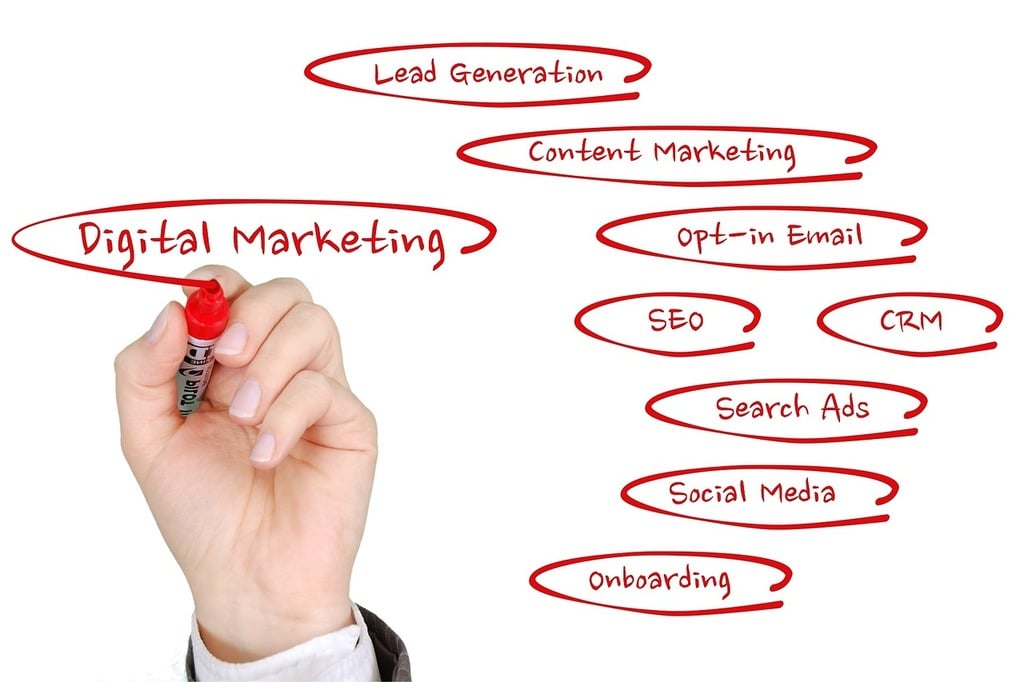Ever puzzle over why some ads really grab you? Often, it’s the powerful an image in advertising that grabs your attention. That picture might make you laugh, think, or even feel a certain way. We’re bombarded with ads daily, but the best ones grab you with amazing pictures. Using images strategically is key for businesses that want to be remembered.
Table Of Contents:
- What Exactly is an Image in Advertising?
- Why Visuals Are So Powerful in Ads
- Different Types of an Image in Advertising
- How Businesses Use Images in Advertising Effectively
- The Psychology Behind Visual Advertising
- Image Advertising in Today’s Digital World: Cookies, Privacy, and Experience
- Common Mistakes to Avoid with Your Ad Images
- The Future of Image in Advertising
- Conclusion
What Exactly is an Image in Advertising?
An image in advertising is much more than just an attractive picture; it’s a visual message carefully chosen to communicate with an audience. Consider how a single picture can convey complex ideas or emotions without a single word. This efficiency comes from our brains’ ability to process visual content very quickly.
These images work to capture your interest almost instantly, a critical first step for any image ad. They are selected to connect with who you are, what you like, and your aspirations. Think of it like this: a memorable brand changes how you see the company and, therefore, how you act. The better the memory, the more powerful the impact on your perception and purchasing decisions.
Think about the last ad you saw. Did the pictures or video make you want to buy the product? Pictures and videos in marketing are powerful—they change how you feel and what you decide to buy. Eye-catching images? Marketing your business will never be the same. Prepare for a big shift—these are game-changers. This is common knowledge. Effective image advertising considers various ad formats to achieve specific objectives.
Pictures make or break an ad campaign. That’s the truth. A compelling image can communicate a message far more effectively than words alone. Consider the impact of a well-designed logo, or a captivating product shot.
Pictures in ads really connect with people; they make us feel things. You might see a family smiling while using a product. Those images? Happy customers mean a strong brand. It’s that simple. Effective marketing doesn’t need to be complicated. This is a perfect example: simple, yet powerful.
Brand recognition gets a boost from images. Think of iconic logos or specific color schemes; you instantly know the brand, like the golden arches of McDonald’s. Improved brand recall directly impacts how visible your brand is to consumers. Marketing triumphs hinge on a brand people remember. It’s that simple. Strong brand recall translates directly into a larger customer base. It’s simple. Think Nike’s swoosh or the Apple logo—instant recognition. This directly impacts sales; we see a noticeable increase in returning customers.
They make tough stuff easy to understand. An infographic, for example, uses visual elements to explain data easily. This makes hard ideas much easier to understand because visuals cut through the noise quickly in our fast-paced world, especially in digital ads.
Powerful images grab your attention and halt that endless scroll. It’s a real attention-getter; you’ll find yourself paying attention without even trying. This initial ability to grab attention is so important for any advertiser, as without it, the message is lost.
Connecting Emotionally Through Imagery
Ads often use images to stir your emotions, leveraging strong emotional appeal. Those sweet puppy-dog eyes and soft fur—it’s enough to make anyone feel all warm and cuddly inside. This feeling can then get linked to the brand being advertised, a clever psychological tactic.
Think about your last purchase. What made you want it? Chances are, it wasn’t just logic. It was probably something more powerful: emotion. That’s what marketers work with. Happiness, comfort, and excitement—that’s the feeling they aim for when choosing the pictures. These emotional connections are strong and often last longer than just remembering a fact about a product.
 According to research from Psychological Science, images evoke faster and stronger reactions than words. Perfect for creating a connection—they’ll help you make a real impression. Strong visuals? A winning campaign needs this.
According to research from Psychological Science, images evoke faster and stronger reactions than words. Perfect for creating a connection—they’ll help you make a real impression. Strong visuals? A winning campaign needs this.
Boosting Brand Recognition
Consistent visual elements help people remember a brand. A signature photography style could work, or maybe a recurring character or even a mascot. Brand recognition improves with repeated visuals. Your brain learns the brand faster, making it easier to stand out from the crowd.
This is why companies spend a lot on their visual identity; they want you to spot their products or ads in a crowd. Being able to spot things quickly—that’s what makes all the difference in a cutthroat market. Connecting with the brand makes people think better of it.
Knowing someone well builds trust. People tend to choose brands they know and recognize. Visuals are key. They boost brand awareness and build customer trust; it’s that simple.
Different Types of an Image in Advertising
Advertisers use many kinds of images, and each type of image in advertising has a specific purpose. To reach more people, the ad’s being improved. Many platforms will carry this. Success is the objective. You can understand high-performing image ads better by learning this.
These choices are not random; they are very strategic. The type of image selected depends on the product, the message, the target audience, and the desired ad formats. For instance, an in-image ad might be suitable for editorial content, while traditional display ads might feature product shots prominently.
Product Shots: Clean and Focused
Product shots are very common in image advertising. These are clear photos focused solely on the item being sold. Think about ads for electronics or food items where the product is usually the star of the show.
The background is often simple to avoid distractions. I absolutely love all the features; they’re simply phenomenal and work perfectly together. And the quality? Don’t even get me started—it’s superb. I’d like you to consider these points carefully. Understanding the bigger picture requires them. It’s theirs. Good lighting and angles are very important here to present the advertising product in the best light.
Lifestyle Images: Connecting with Aspirations
Lifestyle images show the product being used in everyday situations or an aspirational setting. Imagine this: you’re using the product. That’s the goal. People connect with the product more when it’s tied to their lifestyle; this significantly increases engagement.
For example, a car ad might show a family on a fun road trip, appealing to a sense of adventure. A fashion ad might show people looking stylish at a party. Think about the pictures you see online. Many aim to sell you an experience—a taste of a better life—not just the item itself. Happiness and success are what those images promise; they really resonate with our aspirations.
Illustrations and Graphics: Standing Out
Sometimes photos are not the best fit for an image ad. Graphics and illustrations can really make a design stand out; they add a lot of visual appeal. Brands with a fun image or those needing strong visual storytelling will find these tools invaluable for communicating abstract concepts and creating specific feelings.
These can be very memorable and allow for more creative freedom. Your brand will look different. Get ready—more people are about to find out about what you do. Think billboards, but better! In advertising, pictures speak volumes. Digital marketing relies heavily on graphic design to turn confusing data into exciting images people will actually look at. Think of a complex spreadsheet; a good designer can turn it into an infographic anyone can understand.
Before and After Images: The results are in; take a look.
The transformation these products offer is brilliantly captured in these images; they’re a powerful marketing tool. Weight loss products or skincare items often use this type of image advertising. You see the problem, and then you see the solution, which can be very persuasive.
Customers get a good look at all the advantages. But, these need to be used ethically. Misleading before and after shots can damage a brand’s trust and corporate image, so authenticity is vital for this type of an image in advertising.
Celebrity Endorsements: Leveraging Fame
Using a famous person in an ad is a popular tactic in creating image ads. The celebrity’s popularity and credibility can transfer to the product. Fans of the celebrity might be more inclined to try what they endorse, which often happens with sports figures and beauty products.
It can be very effective for boosting brand awareness quickly. The price tag is something to consider; it’s not cheap. There’s also a risk if the celebrity gets into trouble; the brand could be negatively affected too.
How Businesses Use Images in Advertising Effectively
Using an image in advertising well involves several steps beyond just picking a nice photo. Think before you act—that’s the key to business success. Planning ahead really pays off. Every step must be well-planned and thought-out. This means understanding their audience and message deeply to create successful in-image campaigns or other visual advertisements.
First, they need to know who they are talking to. What kind of images will appeal to this group? What’s important to them? What are their hobbies? This research matters because what works visually for one group might not work for another.
High-quality images are their goal. A blurry or poorly composed photo looks unprofessional. A hit to the brand’s image is a definite possibility. Think of the negative publicity. Investing in good photography or design is important because it shows the business cares about quality and the overall perception of its advertising product.
Knowing Your Audience
Understanding the target audience is absolutely vital for any image advertising effort. An ad for teenagers will use very different imagery than one for retirees. This includes the style, colors, and even the people shown in the ad; the goal is to make the audience feel understood.
People’s backgrounds and personalities? Marketers study that stuff. This helps them create a profile of their ideal customer. The images are hand-picked; the goal is to create an ad that really speaks to the target demographic. It’s a much more personal and engaging ad now; it really connects with the viewer.
Telling a Story with Visuals
The best ads often tell a story, and an image can be a powerful storytelling tool. Imagine: a scene is established, characters appear, and the reader is moved. Pictures can be powerful; sometimes they speak volumes, making visual storytelling really important.
The narrative should revolve around the brand’s core message; it’s what will resonate most with your audience. It needs to come through clearly. It should make the product or service memorable. Good visuals make ads way more fun to look at. People are drawn in and curious to learn more—a must for online ads.
Maintaining Brand Consistency
All the visuals a brand uses should feel connected, a concept known as brand consistency. Keep your ads consistent! Use the same colors, styles, and general feel across all your ads and media. A strong brand identity and a consistent corporate image are built this way.
When visuals are consistent, people start to recognize the brand more easily. Building trust comes naturally. Think of Coca-Cola’s consistent use of red and specific fonts; this is a classic example of strong visual branding that reinforces brand awareness.
The Psychology Behind Visual Advertising
There’s a lot of psychology in how an image in advertising works. Pictures speak volumes; our brains are hardwired to notice them. Smart advertisers learn how people respond to things. Ads that are more convincing change what you decide to purchase. Think about it – the ads are made to grab you, hook you in, and change your mind. Think about the last commercial that really stuck with you; it was probably expertly crafted.
Color plays a big role. The emotional impact of color is a fascinating topic; a simple hue can trigger a cascade of memories and feelings. For example, blue often suggests trust and reliability, while red can signify excitement or urgency. Brands choose colors very carefully based on these psychological effects, influencing the overall brand image.
The way an image is composed also matters. Elements like balance, symmetry, and focal points guide our eyes. Advertisers use principles like the rule of thirds to create more interesting and visually appealing compositions that grab attention.
Color Psychology in Action
Brands pick colors strategically. Fast food chains often use red and yellow. Appetite increases, and a sense of speed is created by these colors. Financial institutions might use blue to project stability and trust.
Here’s a quick look at some common color associations:
- Red: Excitement, passion, urgency
- Blue: Trust, calm, stability
- Green: Nature, health, growth
- Yellow: Optimism, warmth, clarity
- Orange: Friendliness, enthusiasm, creativity
- Purple: Luxury, wisdom, imagination
- Black: Sophistication, power, elegance
- White: Purity, simplicity, cleanliness
This is not a strict science, however. Cultural differences can change how colors are perceived. Big companies should keep this in mind when picking pictures and videos. Color choices are part of the overall an image in advertising strategy and affect the emotional appeal of the ad.
The Impact of Human Faces
We are naturally drawn to faces. Seeing a human face in an ad can capture attention quickly. Emotions are also communicated this way. A brand’s image gets a boost when it uses a smiling face. People connect with the friendly feeling it gives off.
Eye contact in an image can be very powerful, creating a sense of connection with the viewer. The direction of the gaze in a photo can also guide attention. If the person in the ad is looking at the product, viewers are likely to look there too, influencing their focus within the image ad.
Today’s digital age has changed how we see ads; now it’s all about images. Think billboards, but online. Privacy, cookies, and your online experience are all connected.
Image ads today rely heavily on technology and user data. Online image and display ads often use cookies to work right and give you a customized online experience. Both sides of this—advertisers and consumers—need to understand this system.
The way we use technology has a big effect; it changes how relevant ads are and it impacts user privacy. Businesses should proceed with caution; these areas present potential challenges. Good digital marketing respects people’s privacy choices. That’s a must.
The Mechanics of Online Image Ads and Cookies
Many online image ads and in-image advertising placements utilize cookies. These small text files are stored on a user’s internet device. Functional cookies help the website function properly, for instance, by remembering user settings or login details.
Performance cookies, on the other hand, collect information about how visitors use a website. This combined, private data shows businesses what’s working on their websites. Users’ interactions with visual content are also visible to them. These cookies enable analysis of ad effectiveness without collecting personally identifiable information directly for this purpose.
The data that cookies collect can influence which image ads are shown. Online time is more fun and productive with these ads. That’s the goal! This improvement in your experience is a direct result of the ads’ function. It makes browsing much easier. User perception of the site is shaped by all of this.
Personalization, Tracking, and Targeted Advertising
Cookies are also a cornerstone of targeted advertising. Advertising partners and networks use them to build profiles of user interests based on browsing history. They can now target ads better across many websites. This makes the web feel more customized for you.
This process identifies your internet device or browser, but not you personally. Matching ads to what people are interested in boosts the chances they’ll interact with them. Modern digital ads are all about personalization.
The data helps us craft more effective visuals; people respond better to images created this way. Smart advertisers study user behavior to improve their visuals. This makes ads work better. They can pick better ad types to reach specific groups of people.
User Control: Privacy Preferences and Consent
With the rise of data-driven advertising, user privacy has become a major focus. Laws like GDPR and CCPA put users in charge. They have better control over their personal information and privacy settings now. Image advertising is directly affected by this.
Websites are now commonly required to inform users about cookie usage through a cookie policy. Before collecting and using your data, especially for ads targeting you, consent is required. Users can often manage their choices through a privacy preference center or preference center on the site.
In these centers, users might see category headings for different types of cookies (e.g., strictly necessary, performance, functional, targeting). They can often use a checkbox label next to a descriptive label label to opt in or out. A vendor search tool helps businesses list their third-party providers. Users can easily choose or remove these providers, keeping their web settings exactly how they want them. Otherwise, those settings might go back to the default options.
Clear communication about data privacy is fundamental; users deserve to know how their information is handled. We collect, use, and protect your data—including personally identifying information—according to these guidelines. We’re committed to protecting your personal details; think of it as a promise. Handling this data correctly builds trust and keeps you on the right side of the law.
Enhancing Web Experience While Respecting Users
The aim of using cookies and related technologies in image advertising is not just to track users. Using the new features is a breeze; we’ve really improved things. The website is more efficient and intuitive now. For example, functional cookies can remember your preferences, saving you time on future visits.
Lots of people appreciate a website that shows them stuff they actually want to see. Seeing ads and content that are useful is really helpful. However, this must be balanced with transparency and control. Party providers of advertising services are also under scrutiny to function properly and ethically.
In-image ads are constantly changing. This lets you put ads in your pictures and videos without them looking clunky. We’re making ads less annoying and more fitting with what you’re looking at.
Measuring Impact: Traffic Sources and Ad Performance
Data collected (often anonymously or aggregated) helps businesses measure the effectiveness of their image ads and in-image campaigns. They can count visits originating from specific ads. The platforms that generate the highest level of user interaction can be identified by examining the origin of website traffic. Marketing strategies and resource allocation get a boost from data analysis. We get more from less; it’s a win-win!
Better ads and a more efficient marketing budget? Pay attention; this is vital. A company’s creative strategy gets a boost when they understand what resonates with their customers; this helps them to focus their efforts. Site navigation and usability will improve significantly. Users will have a smoother experience.
Performance cookies play a role here by providing insights into user interactions post-click. Figuring out which ads and pictures give the best return is what this analysis is all about. Successful image ads depend heavily on data analysis. For example, understanding which images resonate with your target audience based on data leads to better ad performance and ultimately, higher ROI.
Common Mistakes to Avoid with Your Ad Images
Even with good intentions, mistakes happen when creating image ads. Some common errors can weaken an ad’s impact or even damage brand image. Image advertising pitfalls are something all businesses should be mindful of. Watch out for those little things—they can create big problems down the road. A significant issue? Low-resolution pictures.
Blurry or pixelated images look unprofessional. Brand perception and quality take a hit. Customers might think less of the brand because of this. Always use high-resolution photos and graphics. The quality of your images and videos really stands out; it’s clear you pay attention to the small things.
Another mistake is choosing images that don’t match the message. If the visual feels disconnected from the text or product, it confuses people. The image should always support and enhance the core message of the ad. Everything needs to align for the image advertising to be effective.
Ignoring copyright is a serious error when selecting editorial images or other visuals. Stealing pictures is illegal. You could get sued. Always use original content, public domain images, or properly licensed stock photos; it’s not worth the risk to do otherwise.
Sometimes ads have overly cluttered visuals. Too much going on in one picture can be overwhelming. The viewer doesn’t know where to look. Simplicity is often more effective in conveying a clear message and making a lasting impression with your image ad.
Not considering the platform for your display ads or social media posts is another oversight. An image that looks great on a desktop might not work on a mobile screen. Always optimize visuals for different devices and ad formats. Visiting this site should be a breeze. Everyone had a blast—we kept it straightforward. It’s easy to use for all.
The Future of Image in Advertising
The way we use an image in advertising is constantly evolving. This change? Technology is the key. This thing is strong. Image ads and other forms of advertising are evolving. The way they’ll look is being shaped by new developments. This is going to influence how they design things from now on.
Artificial intelligence is one major factor. From simple text prompts, AI is capable of producing incredibly realistic images; this technology is rapidly advancing. Imagine ads looking totally different. Product ads? A big change is coming! This new method is going to revamp them completely. It means faster turnaround times and a bigger selection of image options; pretty awesome, right?
It’s not just static displays anymore; interactive visuals are becoming the new standard. Think of augmented reality (AR) filters on social media platforms or virtual reality (VR) experiences that let you try a product. The ads are way more immersive; they really draw you in. The boost in participation is noticeable; people are much more involved now. Interactive marketing is hot right now; Forbes confirms this upward trend in digital marketing.
Customizing image ads is a hot trend. Ads are becoming more specific to individual preferences. This could mean showing different images to different people based on their data. The plan? Make ads—including those shown within pictures—more meaningful to viewers and increase how much they interact with them.
More and more, what’s true and real matters to people. A significant shift is happening; consumers are choosing differently. Ads showing real people are trending, so companies are using more videos and photos from everyday folks. We need to show a variety of people; this is key. Understanding content and placing ads will improve with image recognition technology. Contextually relevant ads within images will become easier to place.
Successful in-image campaigns will likely blend creativity with smart technology. Thanks to recent advancements, brands have awesome new connection methods. Big and small ads alike will be impacted—from massive digital campaigns to small ads tucked into editorial photos.

Conclusion
Envision this scenario. Good ads use pictures wisely. It’s that simple. Brands build stronger relationships when they tap into the emotional side of human experience; this is how it works. It’s great at storytelling, it tugs at your heartstrings, and it explains complicated stuff simply. Eye-catching ads, whether they’re classic or brand new, stick in people’s minds and get them to buy.
User privacy is paramount, but so is understanding the power of color and visual communication. It’s a dynamic field; things are always in flux. Now for the exciting part! It’s never boring. Businesses that get their visual strategy right, utilizing quality images and effective ad formats, will continue to stand out. Digital marketing depends on great images and videos to connect with people. Without them, your message just won’t get across as well. The right image can dramatically improve how people view your brand and how much they interact with your content; this is true in today’s fast-paced digital landscape.








